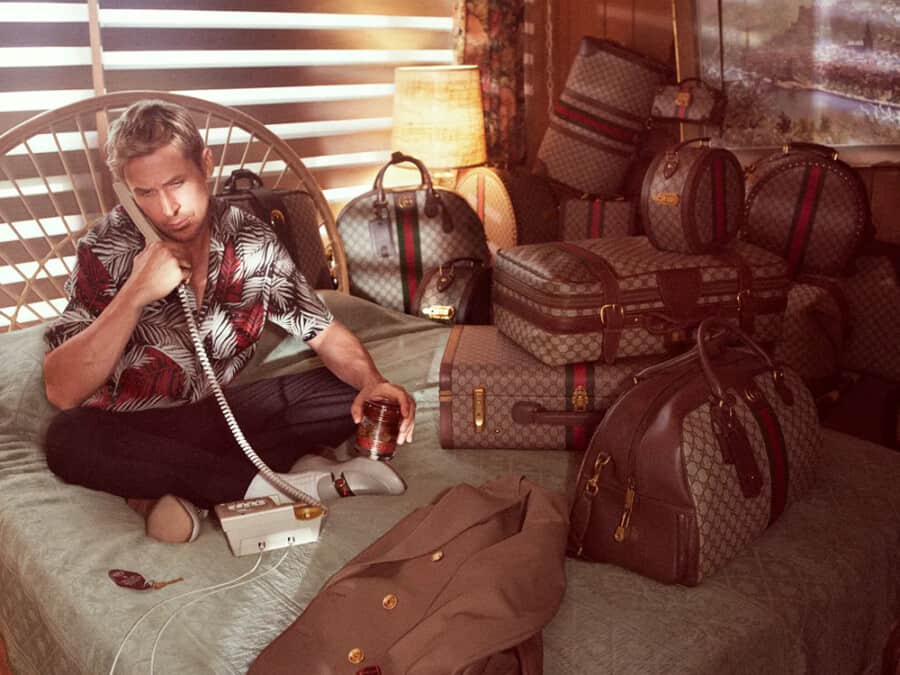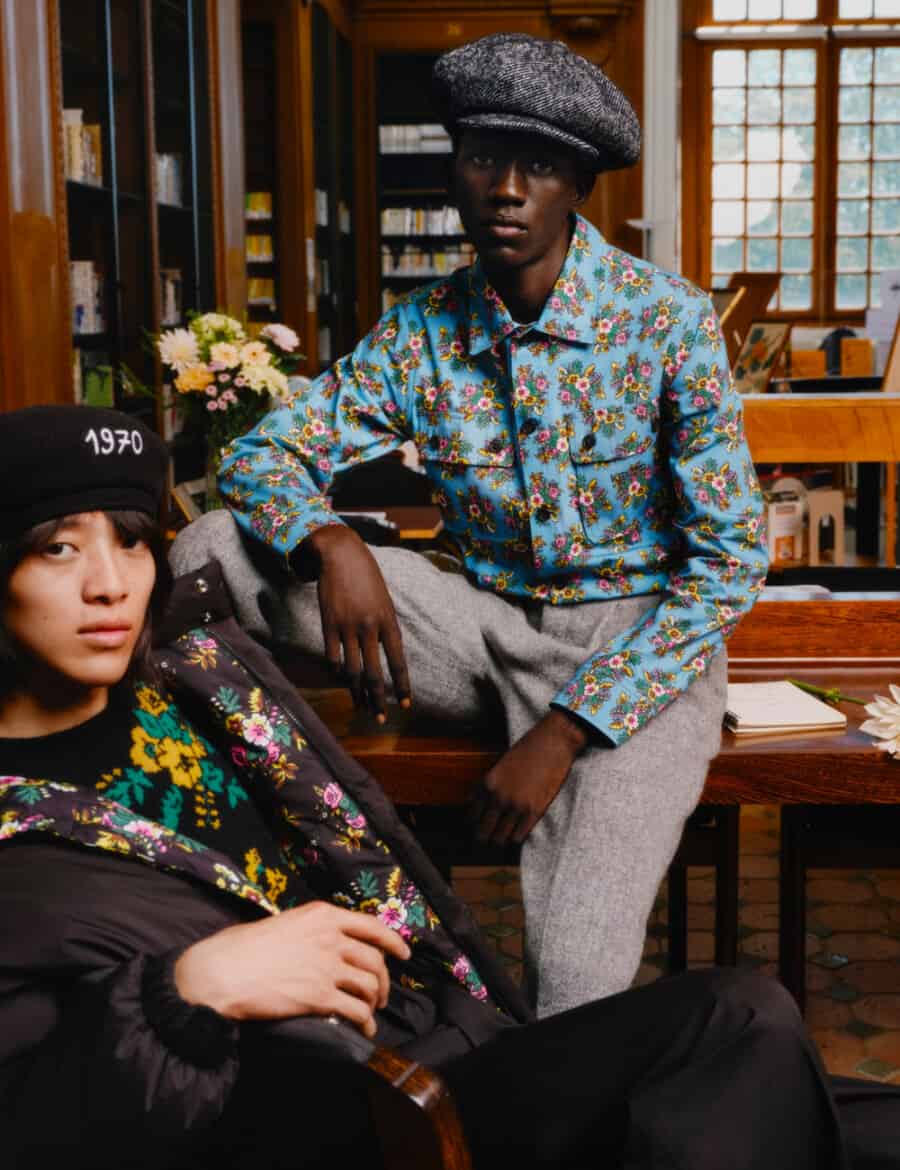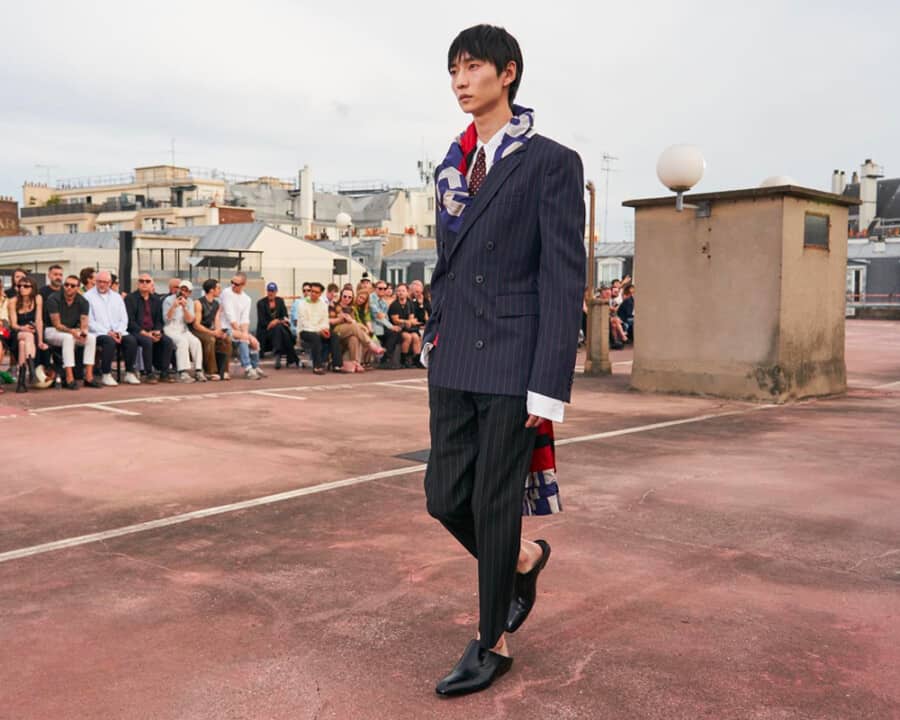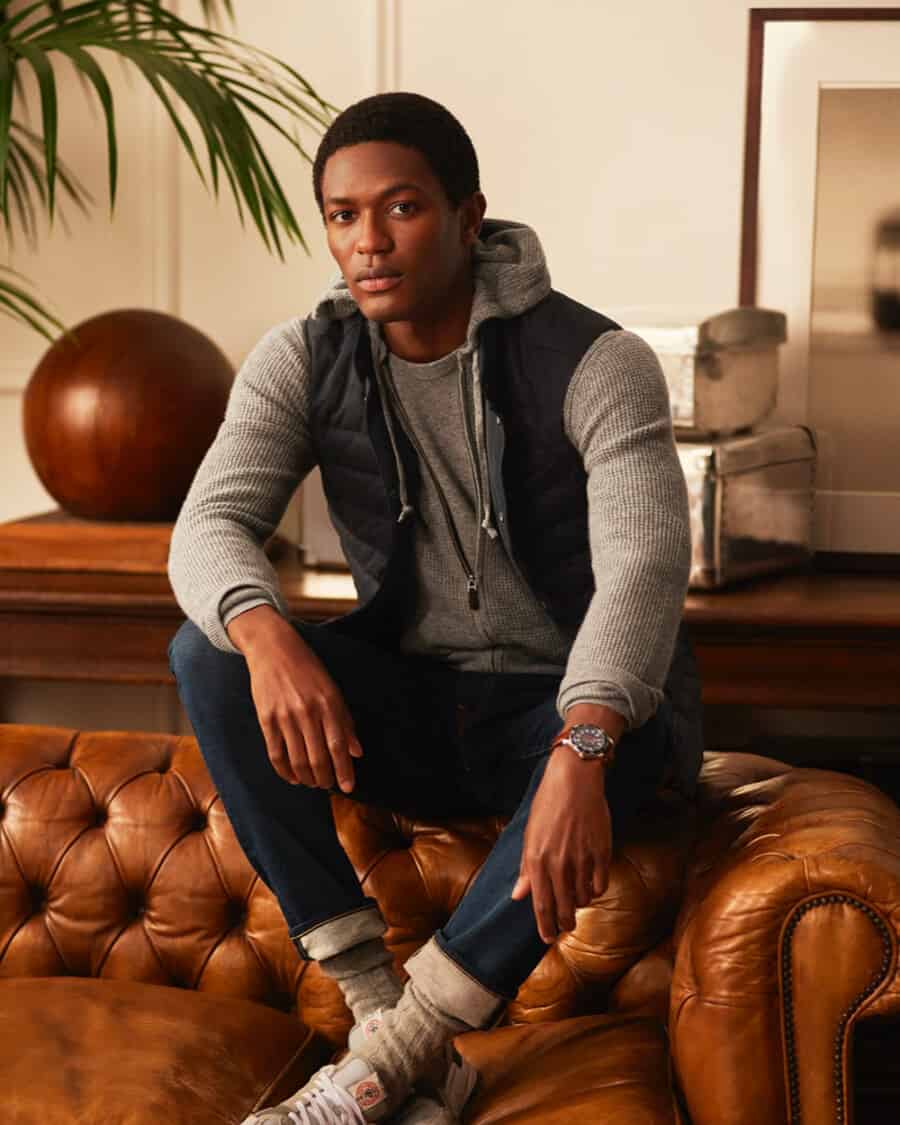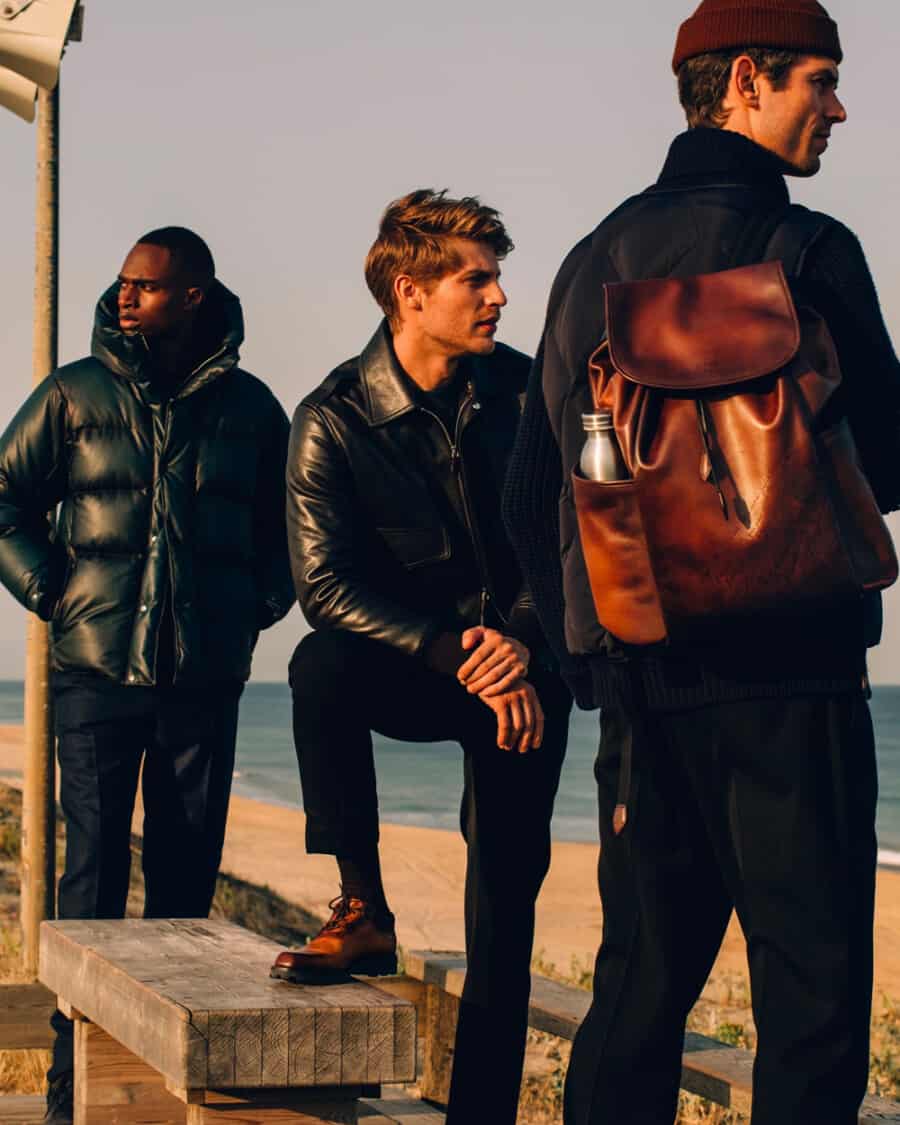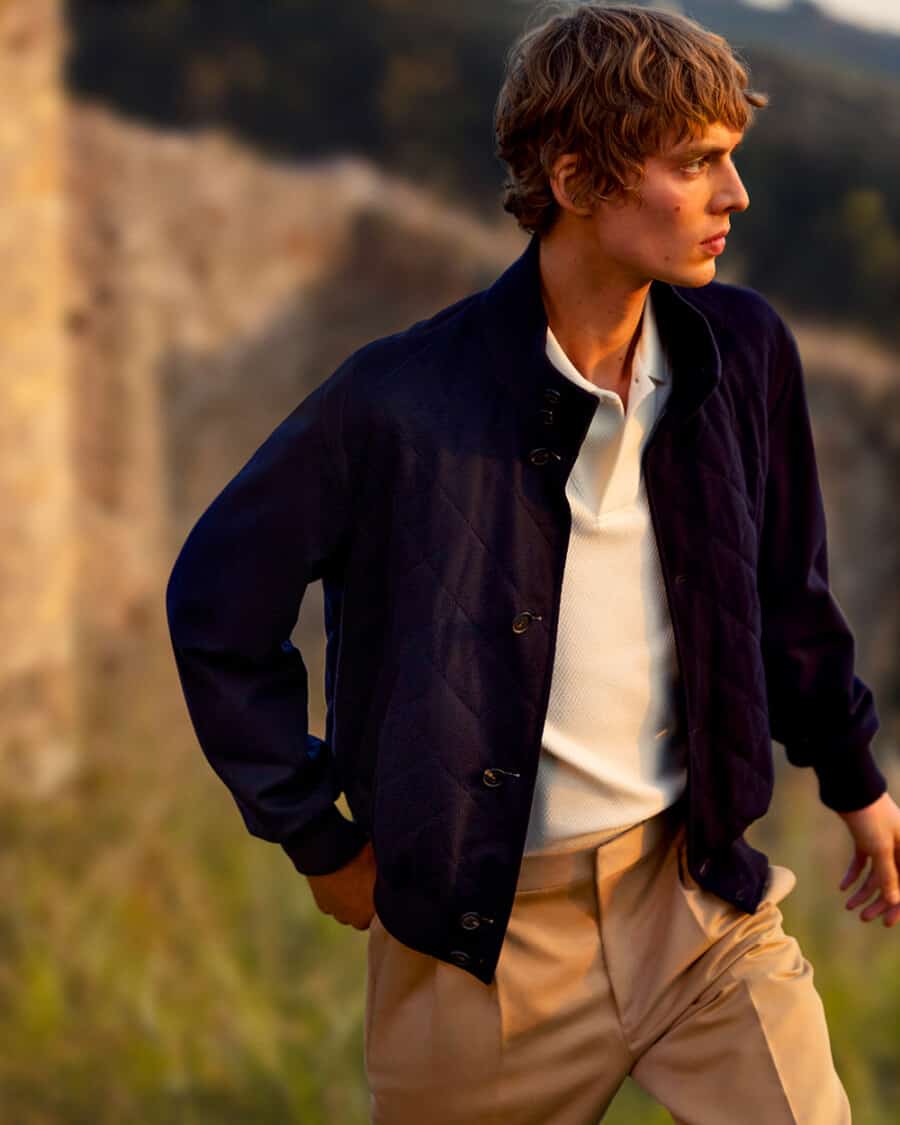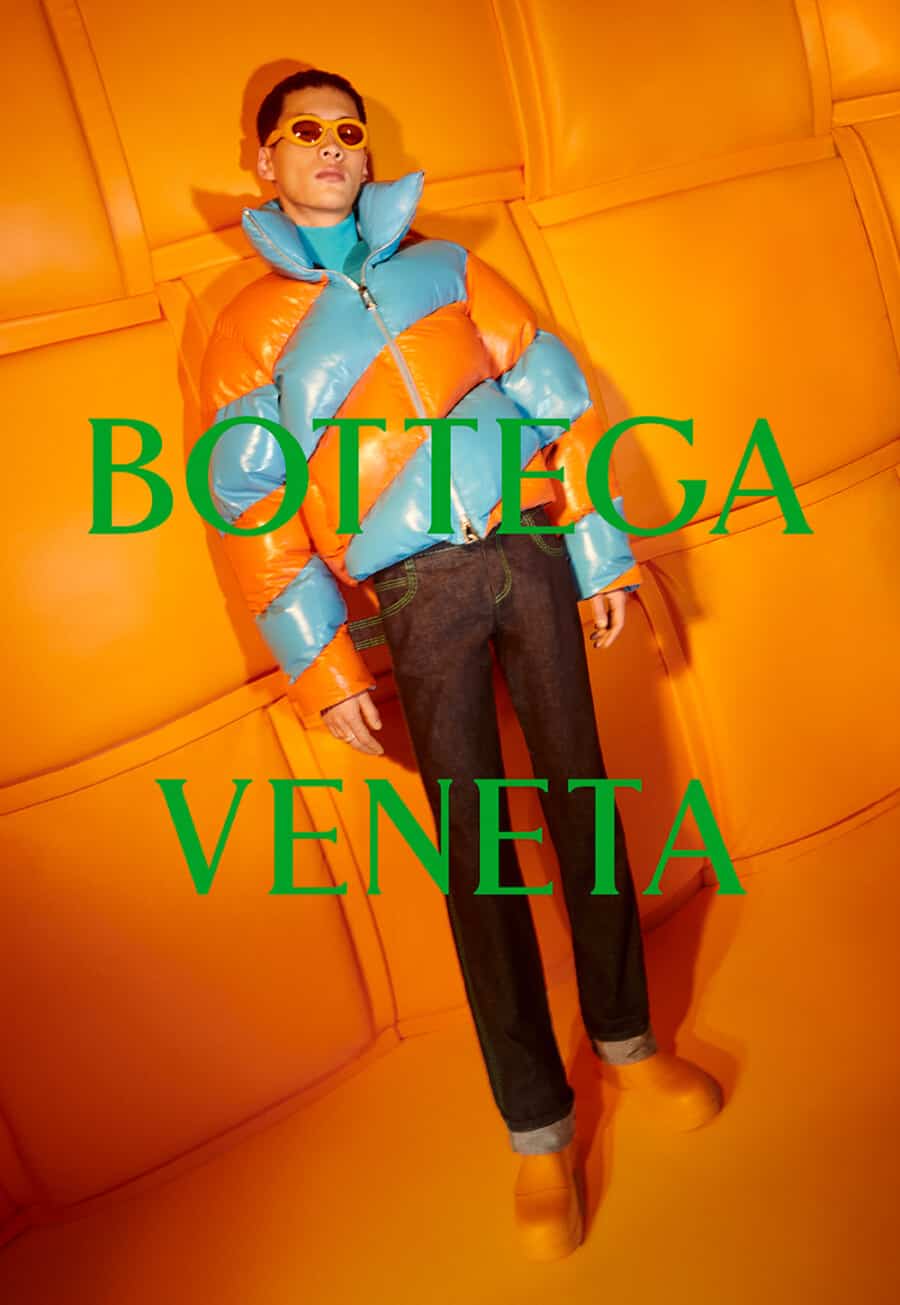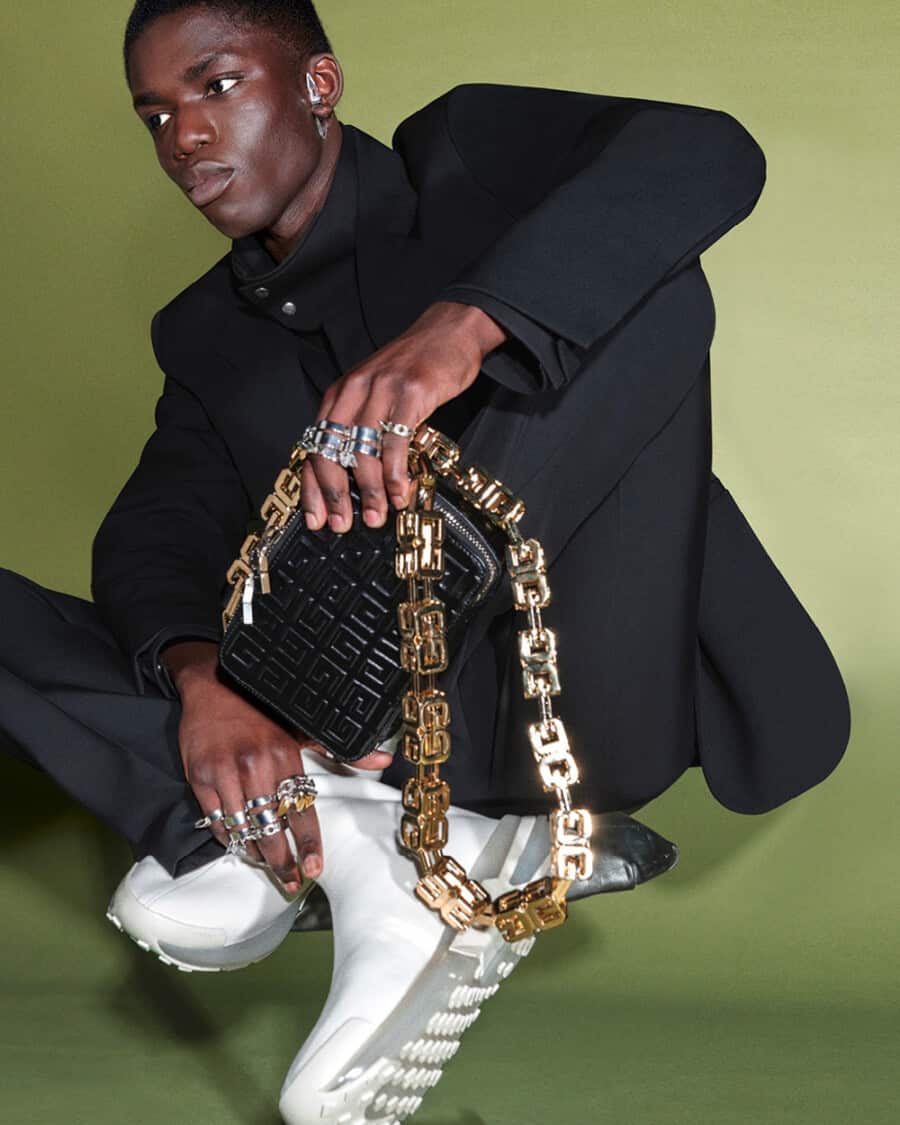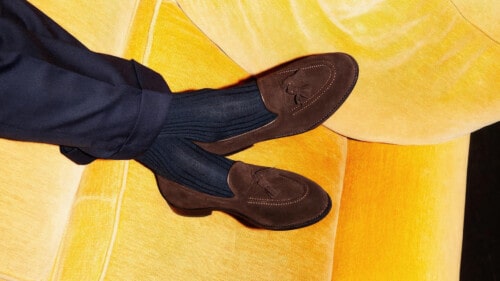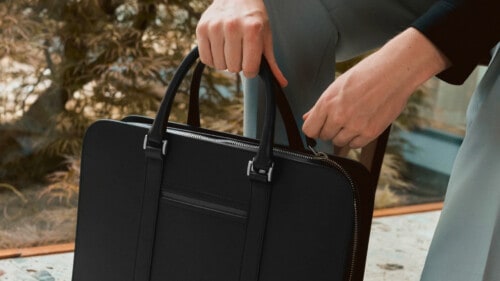
Top 50 Luxury Clothing Brands In The World Today
From the commercial giants and heritage legends to the avant-gardists and innovators, these are the most sought-after (and expensive) names in luxury.
Trying to curate the top 50 luxury designer brands is no small or easy task. Sure, there will be some entries on this list that might seem contentious, but that only goes to show the strength of the fashion industry right now.
There are a host of up and coming luxury brands that on another day would almost certainly deserve a place in the top 50 – but 50 is 50, and we had to make the cut somewhere.
From the hegemonic French and Italian behemoths to Belgian avant-gardists and British heritage labels, the list is as eclectic as it is inspiring.
Louis Vuitton
The poster boy of the LVMH group, Louis Vuitton has been at the forefront of luxury ever since it was founded in 1854 as an upmarket Parisian trunk maker. With its fabled LV monogram becoming one of the most recognisable pieces of branding in the world, Louis Vuitton has, in CEO Bernard Arnault’s own words, “become a cultural brand”.
In recent years, it has stepped out of its comfort zone, and with good effect p the appointment of the late Virgil Abloh as Creative Director being a turning point, and the subsequent appointment of Pharrell Williams.
The brand’s menswear aesthetic revolves around the fusion of supremely elevated streetwear silhouettes and luxury tailoring, introducing new statement print and graphic designs each season.
Gucci
Gucci’s turbulent history as one of the world’s leading fashion brands was superbly brought to life in Ridley Scott’s 2021 flick House of Gucci starring Lady Gaga and Adam Driver.
Fact is often stranger than fiction, but Gucci has ridden the fashion waves long enough to know how to maintain a superbrand. In the period under the stewardship of Alessandro Michele, Gucci embarked on a brave journey into design maximalism, which paid off big time, capturing the zeitgeist for bold expression and unisex dressing.
What the new era will look like is anyone’s guess, but you can be sure that Gucci will continue to ride high on fashion’s love affair with Italian luxury brands.
Prada
Founded by Mario Prada in 1913 and now helmed by daughter Miuccia, Prada has always been seen as the Italian fashion industry’s innovative intellectual, fiercely adhering to a minimalist design philosophy that fused the worlds of style, utility and sports performance.
Now with Raf Simons also at the design table, you can expect even more exploration of silhouette and fabric innovation, but rest assured that the brand will probably not deviate too far from its go-to black colour palette.
Burberry
The iconic British heritage brand founded by Thomas Burberry in 1856 has come a long way from the early days of waterproof cotton trench coats, lined with the instantly recognisable Burberry check.
And while the brand still sees the trench as its hero product, it has firmly planted its flag in the luxury sector. After a flirtation with streetwear under the guidance of Italian Riccardo Tisci, a new era awaits, guided by former Bottega Veneta Creative Director, Danial Lee.
So far, the direction looks to be a reaffirmation of the company’s Britishness, with a keen focus on luxury outerwear and knitwear silhouettes.
Dior Men
The luxury French fashion brand founded by Christian Dior in 1946 has forever been lauded for its pioneering approach to angular yet feminine silhouettes, which Dior coined the ‘New Look’. Although the menswear collections date back to the 80s, it is only really in the last two decades that they have stepped out of the womenswear shadow.
But that’s not to say they weren’t shadowy – under the direction of Hedi Slimane and then Kriss van Assche, Dior Men’s aesthetic was defined by a skinny rock ’n’ roll silhouette, almost exclusively in black.
When Kim Jones took creative control in 2007, the collections have become more eclectic and contemporary, leaning heavily on streetwear shapes as well as modern tailoring.
Balenciaga
Unrecognisable from the couture house founded by Cristóbal Balenciaga in 1937, the Spanish label has nonetheless risen to the highest ranks of the luxury industry, but not without some controversies along the way.
Under the creative direction of Demna Gvasalia since 2016, Balenciaga is one of the true rulebreakers, using meta-design concepts to subvert how we think and approach contemporary fashion. This has seen the brand create some of the biggest trends of recent years, from its ugly SSS sneakers and sleek Speed Socks, to its normcore dad jeans and plastic rainbow-striped shopping bags.
Moncler
Despite being the world’s pre-eminent specialist outerwear brand, the Italian label Moncler had humble beginnings. Founded in 1952 by René Ramillon and André Vincent in the small mountain town of Monestier-de-Clermont, near Grenoble, France, Moncler set out to make padded jackets for the local workers. It wasn’t until French mountaineer Lionel Terray saw the potential in them as performance kit that the brand developed a techwear reputation.
Even so, the brand fell on hard times, and was bought up by Italian entrepreneur Remo Ruffini in 2003, who proceeded to completely reinvent the company into what it is today. With its iconic and eclectic array of puffer jackets backed up with some seriously nice knitwear, Moncler has taken what was a purely functional garment and elevated it into the highest echelons of luxury fashion.
Hermès
Arguably the most esteemed luxury brand on the planet, the French design house founded in 1837 in Paris has represented the very highest standard of handcrafted leather goods, giving rise to iconic products such as the Birkin and Kelly bags.
It has been headquartered in the same premises on 24 rue du Faubourg Saint-Honoré since 1880, and largely cut its own style path ever since, rarely reactive to fashion trends.
Although it does produce a relatively small and well-considered menswear collection, it’s the brand’s luxury leather wallets, scarves, bags and fragrances that continue to elevate its stellar reputation.
Saint Laurent
One of the behemoths of French fashion, Saint Laurent was founded in 1962 by the bespectacled Yves and his partner Pierre Bergé, who together sought to redefine womenswear, epitomised by the feminine dinner jacket known by the name ‘Le Smoking’.
Saint Laurent’s sleek aesthetic has been perpetuated and redefined by a slew of big fashion names, including the late Alber Elbaz, Stefano Pilati, Hedi Slimane and Anthony Vaccarello.
The menswear collections are renowned for their all-black palette with accents of silver, as well as an extremely svelte silhouette. After Hedi Slimane’s departure, the rock ’n’ roll vibe has been somewhat diluted for a more glamorous approach to immaculately tailored shapes.
Balmain
Founded by Pierre Balmain in 1945, the French luxury house has been under the assured creative direction of Olivier Rousteing since 2011, since which the Frenchman has elevated the brand to a level that leans on glamorous eveningwear tropes as well as modern, well-branded streetwear concepts.
Rousteing brings a red-carpet vision to his collections, so you can always expect plenty of beautifully cut tailored silhouettes, embellished with that little something special.
Alexander McQueen
One of the most iconic and iconoclastic fashion houses in the world, the legacy of Lee Alexander McQueen, and his impact on both menswear and womenswear, cannot be underestimated.
The enfant terrible of fashion passed tragically in 2010, and many thought that would be the end of the brand, but his long-time colleague Sarah Burton took over the reins, reaffirming McQueen’s rebellious design principles while also delicately repositioning the company.
The menswear has since become the envy of many houses, focused on strong traditionally tailored silhouettes, often with asymmetric details and wonderful handcrafted embellishments. Burton has taken the punk-ish attitude and deftly turned it into a commercial success, epitomised by the chunky soled lo-fi sneaker.
Off-White
When the late Virgil Abloh founded his streetwear label Off-White in 2012, he surely couldn’t have imagined the success it would garner. Or maybe he did? Who would put it past Abloh, the creative polymath and streetwear visionary.
With a really strong branding appeal, full of iconic motifs (the ‘quotes’, the tags, the cross logo), Abloh left a legacy that shows no signs of abating, producing in-demand seasonal collections ripe with vibrant design, genre mash-ups and extraordinary creativity.
Lanvin
The oldest French fashion house still in operation, Lanvin was founded by Jeanne Lanvin in 1889 and was a regular at fashion’s high table for a long time, with lauded ready-to-wear collections and a thriving perfumes business.
However, the company has changed ownership multiple times in recent years, with a seemingly constant revolving door of CEOs and creative directors. It feels like the esteemed house is due another period in the sun, thanks to its minimalist vision of contemporary luxury.
The funding and talent is there, but fashion is a fickle business.
Versace
The Versace story is almost as wild as some of the collections, but the brand started by the late Gianni and now led by the iconoclastic Donatella has ridden out the rollercoaster to still remain one of the biggest and most successful luxury designer brands in the world.
Renowned for its bold rococo prints in black and gold, and the Medusa logo, the menswear collections are not for the faint-hearted, fusing Italian extravagance with a Miami-inspired hedonism. Flashy prints and outrageous branding details have made sure Versace is never far from the headlines and flashing lights.
When it comes to party wear, it’s everyone’s no-so-guilty secret.
Dolce & Gabbana
Maestros Domenico Dolce and Stefano Gabbana have been presiding over their fashion empire ever since 1985, which is a long time to be at the top table of fashion.
Like Versace, Dolce & Gabbana has perfected a line of glorious hedonism and fashion fantasy, creating menswear collections designed to turn heads rather than blend into the background. With strong branding elements and cool graphic treatments, Dolce & Gabbana has typically stuck with a svelte menswear silhouette, the core of which sticks to a black colour palette with glitzy accents.
Sharp eveningwear shapes and luxury shirts and jackets are all in a day’s work for the Italian duo.
Dsquared2
Canadians Dean and Dan Caten are the twin brothers behind the global success story that is DSquared2 – the bold, brash and at times gloriously outrageous luxury fashion brand.
Having both worked for various labels in Italy, they took the leap and launched their own first collection in 1995 – and haven’t looked back since.
Referencing elements of traditional Canadian workwear such as buffalo check shirts and denim, but completely reimagining them for a vibrant and diverse audience, the Caten’s have fused a love of Italian tailoring and Americana iconography into a fun unisex proposition that is as popular as ever.
Amiri
One of the new breeds of brands that grew up in the era of elevated streetwear, Los Angeles native Mike Amiri founded his eponymous label in 2014, delivering bi-annual collections that bring together the surf, skate and streetwear influences of the American west coast.
Distressed denim jeans and trucker jackets, tie-dye details, relaxed oversized silhouettes and an abundance of fun colourful jersey shapes have placed Amiri firmly in the focus of today’s trend-hungry consumers, and it will be interesting to watch how this luxury designer brand develops over the coming years.
AMI Paris
Alexandre Mattuissi’s AMI Paris brand has been a roaring success ever since he launched his first collection in 2011, delivering a sophisticated and modern tailored aesthetic that combines classic menswear silhouettes in luxury fabrics with elements of streetwear.
It’s a thoroughly contemporary fusion, reinforced with its own brand of Parisian minimalism paired with oversized shapes and the label’s much loved carrot pants.
Branded jersey elements such as hoodies and sweats also play a large part in AMI’s popularity – all together, it’s a stunning and easy-to-wear aesthetic that’s both modern and timeless. What more can you ask for?
JW Anderson
While JW Anderson may be a relatively small label compared to the many giants on this list, its eponymous founder’s collections always move the cultural needle. Creating bold unisex shapes using avant-garde techniques, Anderson’s collections are at once fun, fierce, playful and loaded with meaning.
They’re also not for wallflowers. With crazy prints and wacky graphics combined with a quite brilliant knack for iconic look-at-me knitwear, Anderson has developed a cult following for good reason.
Loewe
If JW Anderson’s creative outlet is his own eponymous brand, then his work at premium Spanish label Loewe is a more considered and sophisticated approach to high fashion. That Anderson does both with aplomb is testament to the Irishman’s talent and dexterity.
At Loewe, which was founded in 1846 and is actually LVMH’s oldest fashion house, Anderson has had incredible success with luxury leather bags, but his menswear collections are deserving of plaudits, too, characterised by avant-garde cuts, diverse fabrications and bold uses of pattern and colour.
Hugo BOSS
The German giant might not be in the same luxury echelons as its French and Italian counterparts, but its global reach is unrelenting. Despite an ignominious early history, the company began to focus on men’s suiting after the Second World War, a segment of its business which continues to be huge today, as well as a sophisticated sportswear line and a massive fragrance business.
Economies of scale have meant that the company has moved away from handcrafting to a much more machine-based production line. The profits keep rolling in though, so something’s working.
Kenzo
Japanese designer Kenzo Takada is an honorary son of Paris, having moved there in 1964 and launched his eponymous brand in 1976. Under the LVMH roster since 1993, Kenzo designed his first men’s collection in 1983, following the same bright, bold influences that made his womenswear a global hit.
Fragrances, womenswear and logo pieces brought in the money over the intervening years, but the menswear had long gone off the boil until very recently, when the appointment of creative polymath Nigo gave Kenzo an adrenaline shot in the arm.
Nigo’s vision has seen the same love of colours and pattern, only morphed into a preppy brand of new-wave streetwear that has been supremely successful.
Dries Van Noten
Often heralded as the designer’s designer, what Dries Van Noten lacks in size and reach the brand more than makes up for in contemporary avant-gardism.
One of the original ‘Antwerp 6’, Van Noten is a master of experimental tailored silhouettes, often blowing up proportions and experimenting with asymmetric details. His use of complex patterns and patchworks is peerless, too.
When buying into most luxury designer brands, you are to some extent following the herd. When you buy into Dries Van Noten, you are singing to a completely different tune.
Jil Sander
From making clothing with her mother’s sewing machine to becoming one of the world’s premier luxury fashion brands, German designer Jil Sander might not be behind her namesake brand any more but the sleek, minimalist legacy she started has been faithfully (and beautifully) continued to this day.
Renowned for their clean lines, eclectic silhouettes, sumptuous fabrics and pared-back colour palettes, Jil Sander collections are the very definition of contemporary sophistication.
The brilliant husband and wife team of Lucie and Luke Meier (founders of OAMC) have been steering the ship since 2017, and long may that continue.
Giorgio Armani
The don of modern Italian fashion, Giorgio Armani’s unique brand of tailored sophistication has stood the test of time, thanks to the 88-year-old designer’s unwavering ability to capture the elegance of every zeitgeist he has lived through.
From the 80s power suits that changed Hollywood and Wall Street alike, to the red carpet fashion he largely pioneered, Armani’s aesthetic has remained timeless. His expertly tailored silhouettes always evolve with the times, yet remain flattering and elegant.
With Emporio Armani, the sportier line, Armani Casa, the homewear brand, and a huge fragrances arm, the Italian has amassed a fortune just shy of $10 billion, so the formula definitely works.
Ralph Lauren
From humble beginnings selling silk ties out of a briefcase, Ralph Lauren has grown to become one of the biggest and most recognisable fashion brands in the world.
Eighty-three-year-old Lauren realised early in his career that doubling down on a new, modern, preppy version of Americana would be a zeitgeist that every subsequent generation could feel a part of. And so with Ralph Lauren Polo he not only created a clothing line, but he redefined what it was to dress ‘American’.
Ralph Lauren Purple Label is the brand’s super-luxury tailoring line, fusing fine fabrics with sumptuous tailored silhouettes, while his RRL label has more of a rugged workwear vibe about it.
Maison Margiela
Martin Margiela is largely considered to be one of the most influential modern menswear designers there has ever been, introducing an avant-garde deconstructed aesthetic full of experimental silhouettes and upcycled elements.
Belgian Margiela was a member of the much feted Antwerp 6, and used a great deal of contemporary art as his menswear muse. Although he left the brand in 2009, the rulebreaker aesthetic has been in excellent hands with current Creative Director John Galliano, who has honoured and evolved Margiela’s vision with ageless and nonconformist spins on classic tailored silhouettes.
Tom Ford
Celebrated Texan designer Tom Ford set up his eponymous brand in 2005, after notable stints as Creative Director at Gucci and Saint Laurent. An American designer at the top European luxury houses was seen as a big risk but Ford proved all naysayers wrong, almost singlehandedly turning around the fortunes at Gucci.
He became known for bringing back a glamorous brand of eveningwear-inspired menswear, replete with sumptuous tailoring and svelte black silhouettes. His tuxedos are still the hottest property on the most photographed red carpets.
Sophisticated and modern but certainly influenced by Hollywood’s golden age, Ford’s collections are for the sartorially inclined and lovers of fine fabrics.
Rick Owens
Californian Rick Owens founded his eponymous brand in 1994 with a dark and futuristic aesthetic that the designer has never wavered from.
His collections are almost entirely monochromatic, featuring lots of svelte experimental silhouettes combined with sportswear shapes and the designer’s penchant for the singlet, which forms part of his own everyday uniform. The Rick Owens hi-tops with their exaggerated tongues have become another of his brand semantics.
An adopted Parisian since 2003, Owens’ collections continue to push the envelope of modern avant-gardism in fashion.
Valentino
Tip-toeing into his nineties, Valentino Clemente Ludovico Garavani, known the world over as ‘Valentino’, has been at the top table of fashion since 1962, when he first launched his womenswear label to critical acclaim.
Renowned for his exquisite ball gowns and red carpet dresses, menswear had always taken a backseat. But under the creative direction of fellow Italian Pierpaolo Piccioli, the men’s line has been given a new lease of life, blending modern tailored shapes with streetwear silhouettes, emboldened by an extravagant colour palette and plenty of branding details.
Zegna
Zegna is a behemoth of the industry. The Italian company not only boasts one of the most sophisticated aesthetics in menswear, but is also responsible for an enormous amount of luxury wool fabric production in Biella, Italy’s wool weaving Mecca.
Founded by Ermenegildo in 1910 as a textile company, it was always in the business of suits, and while that part of the business is still huge, fabric innovation has led it into more sporty genres. Creative Director Alessandro Sartori is a genius when it comes to fabric, drape and texture, so it’s no surprise that he has been leading the label’s creativity since 2016. His vision has perfectly blended Zegna’s heritage with a decidedly modern and forward-looking aesthetic, redefining tailoring as an extension of casualwear.
Zegna also upholds the highest standards of sustainability practices, and is one of the signatories of the Fashion Pact, a plan signed by 32 major fashion brands to reduce their environmental impact.
Acne Studios
Scandinavian brand Acne Studios was founded in 1996, and has since been a forerunner for streetwear trends and experimental tailoring. Although there are hints of Scandi minimalism that creep into the collections, they are for the most part vibrant and eclectic, with elements of skate culture informing the oversized silhouettes.
A cult following has rightly been earned, since the Swedish label always does things its own unique way. Its mohair-infused knitwear and scarves are winter icons, but it’s the experimental shapes and wild fabrications that keeps the diehards coming back for more each and every season.
Berluti
Founded by Alessandro Berluti in 1895, Berluti has forever been regarded as one of the world’s pre-eminent leather specialists, renowned for its incredible hand-treated patinas across its luxury shoes, boots, bags and small leather goods.
Best known for its shoes cut from a single piece of leather, it wasn’t until 2012 that the company branched out into menswear. Owned by LVMH and chaired by Antoine Arnault, Berluti’s shoe business is still exemplary, but its ready-to-wear has never quite found its feet, which is strange given the caliber of creative directors it has boasted.
Nevertheless, the collections have always been the pinnacle of luxury, revolving around statement leather jackets. Berluti is, perhaps, a sleeping giant that is still waiting to hit its stride.
Calvin Klein
Say the words “Calvin Klein” and the thoughts and images they conjure are most likely to be about fragrances and designer underwear. Calvin Klein built an empire on those two categories alone (thanks to some genius marketing campaigns back in the 2000s), but he first made his name with an initial collection of designer jeans, before applying his unique stamp of American minimalism on collections that rarely deviated from neutral tones, sleek lines and pared-back details.
Today, the menswear line is almost entirely denim, sportswear and loungewear, with a sprinkling of unstructured tailoring and techwear shapes.
Brunello Cucinelli
The man who built his entire business around the village of Solomeo in Umbria has come to define modern luxury. Starting in 1978 with a cashmere line for women, Brunello Cucinelli has since become the industry’s bar for fine fabrications and a timeless menswear aesthetic.
The Cucinelli look is an amalgam of gentrified country squire and contemporary urban master of the universe, with relaxed tailored separates, sporty jackets and gilets, and exquisite cashmere and silk knitwear to the fore.
Collections invariably play out in a theatre of soft neutral tones, making them truly timeless representations of the highest level of menswear.
Loro Piana
Much like Ermenegildo Zegna, Loro Piana, which was founded in 1924, is a textile business at its core, but since it launched its own label in the 80s, it has developed into a globally recognised fashion brand.
Majority owned by the LVMH group, and one of the world’s biggest producers of cashmere and luxury fibres, it goes without saying that Loro Piana collections are the height of fabrication excellence. The aesthetic is timeless and elegant, using the most outrageously soft natural cloths and skins throughout.
Each garment is an investment piece, beautifully handcrafted by skilled Italian artisans. It’s also not short on innovation either, having produced a number of interesting cloths, not least the waterproof and windproof Storm System.
Brioni
It was hard to not include more dedicated suitmakers in this list, but the rise of a more casual aesthetic over the last 50 years has meant many have been left behind in the luxury race. Smaller ateliers have fared well, feeding a more localised audience, while the big brands have had to adapt to survive.
The Roman suitmaker Brioni is one of the latter. Largely credited with the invention of the trunk show, Brioni’s classic Italian tailored aesthetic has had its work cut out keeping pace with the more expressive forms of contemporary tailoring at the big luxury fashion houses. Yet the Kering-owned brand has nevertheless managed to retain a global sartorial consumer thanks to its sharp lines and elegant leisurewear.
Bottega Veneta
The Milanese brand best known for its intrecciato leather weaving style was founded in 1966 by Michele Taddei and Renzo Zengiaro and has since evolved to become one of the most sought-after luxury labels.
Bottega’s aesthetic was coined ‘stealth wealth’ by Vogue magazine, referencing the label’s pared-back minimalism and complete lack of branding, something which continues to define the brand today.
The menswear collections are arranged in small capsules of colour tonality, and are generally very minimal, with clean silhouettes constructed from exquisite fabrics, with only the occasional smattering of pattern. The very definition of IYKYK.
Comme des Garçons
Another Japanese love affair born in Tokyo but bred in Paris, Comme des Garçons was launched in 1993 by Rei Kawakubo and didn’t get off to the greatest start, with Kawakubo’s distressed black avant-gardism a stretch too far for the Parisian critics. Looking back, it was way ahead of its time.
Today, the Homme Plus mainline takes a backseat to the CdG Play line, globally recognised for its heart-shaped logo across tees, sweats and Converse sneakers.
Kawakubo’s protégé Junya Watanabe is still driving the brand forward with innovative collections that are presented as performance art rather than your average runway show.
Fendi
Headquartered in Rome, and nestled under the LVMH umbrella, Fendi started as a specialist fur and leather boutique way back in 1925. While Kim Jones steers the lauded womenswear line forward, and the famous baguette and peekaboo bags continue to drive revenues, the responsibility of a considered menswear collection comes down to Silvia Venturini Fendi.
Fendi has risen to the task, deftly combined strong branding elements (the double ‘F’ logo was introduced by Karl Lagerfeld in 1966) with experimental silhouettes and bold colours and patterns, alongside some very contemporary tailoring shapes.
Givenchy
One of the most iconic luxury French fashion houses, Givenchy was founded by Hubert de Givenchy in 1954, specialising in women’s haute couture. His fame and reputation were sealed by the time his first runway show had finished, with critics calling it a masterpiece and a revelation. That set the tone until the mid 90s, when Hubert retired.
By that stage, Givenchy was a part of the LVMH group and had already separately employed mavericks Alexander McQueen and John Galliano to revive the brand. Bold employments followed in the shape of Riccardo Tisci, then Clare Waight Keller, and most recently Matthew Williams.
Clearly not afraid to push the envelope, the Givenchy menswear line now has a decidedly urban edge to it, full of strong streetwear shapes and bold logo treatments.
Issey Miyake
Issey Miyake passed away in 2022 but the Japanese designer left a fashion legacy. A futurist in many ways, Miyake’s most successful product wasn’t a garment but his fragrance, L’eau D’Issey.
Nevertheless Miyake was feted for his experimental designs, and especially the pleat, which he researched and explored and played with his entire career, creating fantasy shapes across menswear and womenswear.
Issey Miyake Men and Issey Miyake Homme Plissé are triumphs of avant-gardism, but he could do the simple things perfectly too. Those black turtlenecks that Steve Jobs wore? All Issey.
Celine Homme
Celine actually started as a children’s shoe business in 1945, founded by Céline Vipiana, who steered the company until the appointment of Michael Kors in 1997. Now under the umbrella of LVMH, it is one of the darlings of womenswear, but a relative newcomer to the menswear scene.
Still, it has been making a splash thanks to the creative direction of Hedi Slimane who has applied his unique ointment of indie sleaze, rock ‘n’ roll glamour and club kid nihilism.
The collections are defined by that unwaveringly Slimaney silhouette: super skinny and almost entirely in black, with plenty of leather and metal studded embellishments.
Missoni
Instantly recognisable for the iconic rainbow zigzag motif, Missoni has always been about the knitwear, ever since it was founded by Ottavio and Rosita Missoni in 1953. It reached its peak of popularity in the 70s with its stunning knitted dresses but has since quietly percolated, branching out into homeware, kid’s collections and even hotels.
Still majority family owned, Missoni’s menswear collections are full of beautifully made modern classics, with crew neck knits and luxury polos and short-sleeved shirts all riffing on the house’s heritage patterns.
The brand definitely leans towards a more resort vibe, so the spring/summer collections are prime holiday sophistication.
Stone Island/C.P Company
Individually, they are iconic brands, but together, the Italian labels that Massimo Osti founded have been instrumental in pushing forward the fashion functionality of elevated techwear.
Highly influenced by classic military garments, CP Company has developed some of the most innovative technical fabrics of the last half century as well as being at the forefront of new garment dyeing processes, while not-so-little brother brand Stone Island has earned a cult following for its iconic casualwear.
Paul Smith
Nottingham born and bred, Sir Paul Smith has presided over his brand for 53 years, ever since he opened his first shop in 1970.
Smith’s eclectic tastes and intrepid spirit for travel, not to mention a fervour for cycling, has constantly informed his brand’s aesthetic, which combines a sleek, modern tailored silhouette with bold colours and vibrant patterns (not least his signature striped pattern), alongside a versatile fusion of casual elements.
While still very popular in the UK, Smith’s biggest market is in Japan where the designer enjoys cult status. While the label has expanded into various other categories, Paul Smith’s menswear line is still the brilliant amalgam of fun, functionality and free-living spirit it always has been.
Salvatore Ferragamo
Florence-based Salvatore Ferragamo is one of the most lauded shoemaking specialists in the world, championed for its womens shoes. Ferragamo was incredibly innovative, inventing a number of techniques and styles that made heels that much more comfortable to wear.
Although the company has flirted with ready-to-wear collections in the past, it has rightly decided to stick to doing what it does best – shoemaking.
The men’s collections are stunning and diverse, with all of the classic styles handcrafted in beautiful patina-rich calfskin leather as well as a luxury sneaker collection that is more design than hype.
Thom Browne
Since 2018, the iconoclastic contemporary tailoring brand Thom Browne has been majority owned by the Italian giant Ermenegildo Zegna, a move which seems to have benefitted both companies.
Browne’s avant garde take on tailoring is undimmed, with his trademark shrunken silhouette still going strong. The New York-based designer creates collections that rarely ever deviate from tones of grey, replete with super-sharp crops, exaggerated turn-ups and the brand’s tricolour detailing and four-stripe motif.
Browne’s sportswear and loungewear has also been a massive boon in recent years, and believe it or not, come in an array of soft pastel tones, not just grey.
Yohji Yamamoto
Yet another Japanese avant-gardist, Yohji Yamamoto is a tailor of the highest order, winning notable awards for his contributions to fashion. He gave up a legal career to assist his mother in her dress-making business, and how the move paid off.
His menswear collections are invariably dark, and often incorporate unique design details such as double collars, elements of patchwork, cropped trousers and asymmetrical shapes. The outerwear is a treat, with unique shapes and stunning drapes helping to create a truly unique approach to modern menswear.
Raf Simons
Currently co-Creative Director at Prada as well as fronting his own eponymous label, Belgian Raf Simons is widely regarded as one of the most cerebral designers in fashion. His resumé is a who’s who of top class brands, including Jil Sander, Calvin Klein and Christian Dior.
He started his own label in 1995, and it has always been something of a creative outlet for Simons, rather than an ambitious commercial enterprise, so it didn’t come as a surprise when he announced that the SS23 collection would be the brand’s last.
Even so, the creativity and vision that Raf Simons has imparted over the years means his name is still gold dust, and deservedly takes a place on this list.

